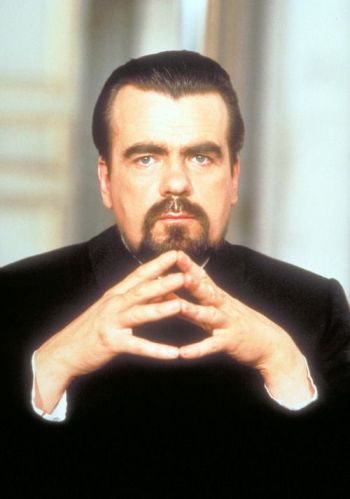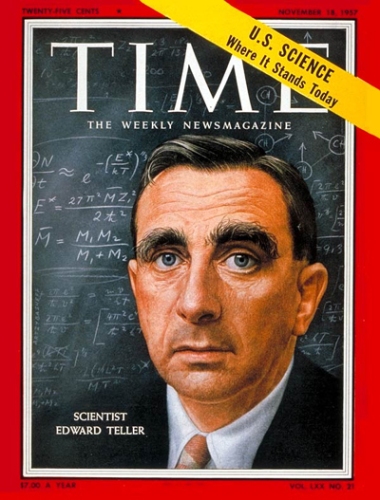We all love a movie about a mad scientist that creates the means to end humanity, posthaste. James Bond, for example, has faced a long line of literary megalomaniacs with apocalyptic designs.

The Star Wars Saga frequently entails a climax with selfless warriors swarming around a huge embodiment of a maligned, civilization-destroying power–“Starkiller Base” is the most current example in The Force Awakens.

Throughout much of history, humans have only been able to imagine that level of destructive power. Now, we live not with a singular, hulking manifestation of doomsday destruction, but instead, with a proliferating and compartmentalized technology that has a similar aim. The hydrogen bomb, as it’s termed in media, could truly end human civilization or at least make those who survived a thermo-nuclear war wish humanity was finished.
It’s beyond anticlimactic to inform billions of humans that our civilization’s climax passed before most people on Earth in 2016 were even born. Oppenheimer indicated his suspicion that the apocalypse might be near when his team detonated the first “atom” bomb in a New Mexican desert. During a TV interview, he quoted an ancient Hindu text: “Now I am become death, the destroyer of worlds.”
It was, at the very least, an annoying grammatical construction. Originally written in Sanskrit, a nearly dead language, Oppenheimer would have struggled to find more apocalyptic words to usher in the nuclear age. Oppenheimer had the peculiar distinction of being a fluent reader of Sanskrit, so we should assume his translation is a good as it gets.
Oppenheimer didn’t trace his ancestry to South Asia–both of his parents were areligious Jewish-German immigrants to USA–but he was obviously intrigued by Vedic Theology. Oppenheimer’s statement was haunting. To make it easier for me to comprehend Oppenheimer’s words, I assume “become” is more of a noun than a verb making “become death” an embodiment as opposed to a process.
Oppenheimer was JV, or perhaps we should say a warm up for the main act, Edward Teller.

Teller was the principle progenitor of the Teller-Ulam configuration. Evidently, the process was first brainstormed by the famous nuclear physicist, Enrico Fermi. In the interest of keeping this explanation as simple as possible, let’s just say Teller-Ulam uses a fission bomb–media and popular culture like to call it an atom bomb–to trigger a larger fusion explosion.
The “hydrogen bomb” is an apt and precisely correct name. The fuel is hydrogen, the simplest atom. The process is challenging not in its complication, but in the energy necessary to light the fuse, so to speak. Without the mastery of fission weaponry, fusion bombs are impossible–until we have an alternative to Tellar-Ulam. To create a hydrogen bomb, just “push” a bunch of hydrogen nuclei together to form half as many helium atoms. Helium is the second simplest atom.
USA detonated Ivy Mike, the first hydrogen bomb, on November 1, 1952 near the Marshall islands.

To say Ivy Mike had a ten megaton yield is meaningless to most. I might deepen your confusion if I were to say that’s the same as 10,000 kilotons. Let’s use a clarifying example: Little Boy, the fission bomb that destroyed Hiroshima was 15 kilotons.

Here is a video from the documentary Hiroshima that will put August 6, 1945 into a more humane perspective; it’s over eight minutes but worth the time investment.
Once again, to make it as simple as possible, Ivy Mike had the energy of nearly 667 Little Boys.
Why are fusion weapons (aka hydrogen bombs) so much more energetic than fission weapons (aka atom bombs)? It has to do with the peculiar nature of strong nuclear force and how it changes mass into energy under certain circumstances…
If you liked this post, you might enjoy this one, too: Hunter Gatherers in the Quantum Age.